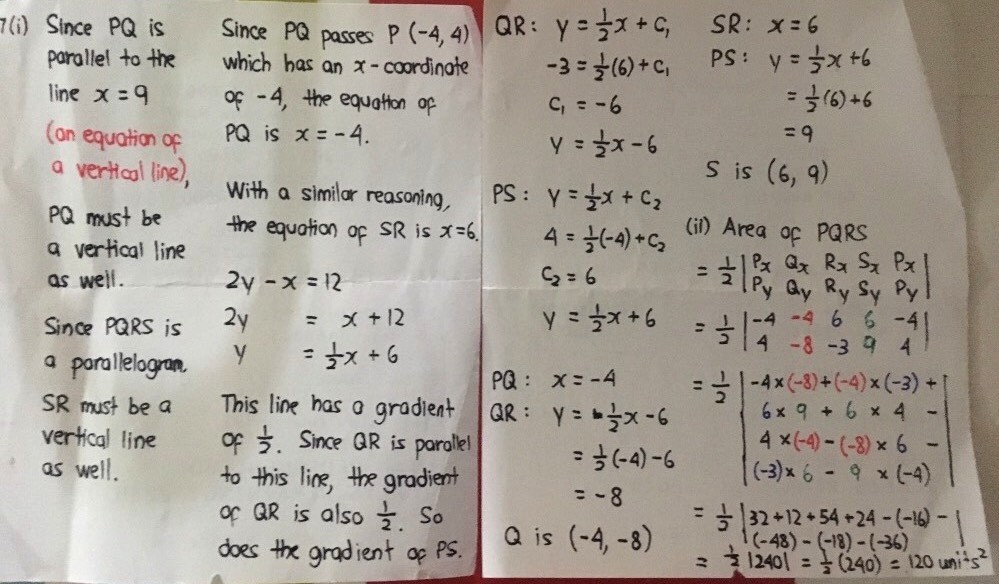Eric Nicholas K's answer to Rachel's Secondary 3 A Maths Singapore question.
done
{{ upvoteCount }} Upvotes
clear
{{ downvoteCount * -1 }} Downvotes
Q7
Once you notice that two sides of the parallelogram are vertical, part (ii) can be done using a much easier method: Base of parallelogram x perpendicular height of parallelogram.
Here you can think of PQ as a “base” of 12 units (since both have the same x-coordinates but both have a difference in y-coordinates of 12, which is a change from -4 to 8).
The “height” of the parallelogram is then the difference in x-coordinates of Q and R (since the x-direction and y-direction are perpendicular to each other), which is 10 (a change from -4 to 6).
So, the area of the parallelogram is 12 x 10 = 120 units2.
Once you notice that two sides of the parallelogram are vertical, part (ii) can be done using a much easier method: Base of parallelogram x perpendicular height of parallelogram.
Here you can think of PQ as a “base” of 12 units (since both have the same x-coordinates but both have a difference in y-coordinates of 12, which is a change from -4 to 8).
The “height” of the parallelogram is then the difference in x-coordinates of Q and R (since the x-direction and y-direction are perpendicular to each other), which is 10 (a change from -4 to 6).
So, the area of the parallelogram is 12 x 10 = 120 units2.
Date Posted:
4 years ago


